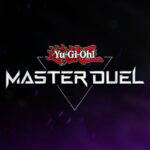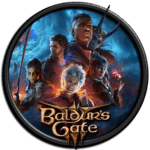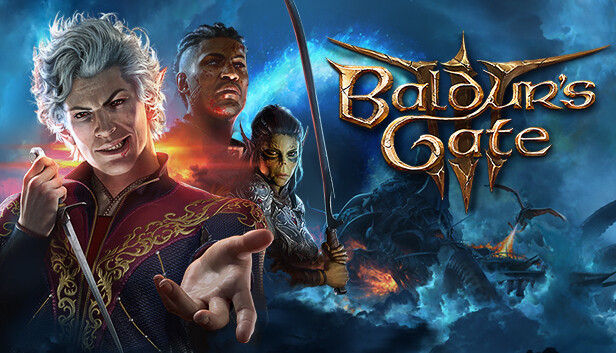Advertisement
Popular Now
Baldur’s Gate 3, developed by Larian Studios, is a sprawling role-playing game (RPG) that blends intricate storytelling, strategic combat, and boundless exploration in the Dungeons & Dragons (D&D) universe. Whether you're a seasoned adventurer or a newcomer to the Forgotten Realms, mastering the game’s mechanics and narrative choices can be daunting. This guide offers comprehensive tips and strategies to navigate the challenges of Baldur’s Gate 3, from character creation to endgame triumphs. With a focus on practical advice, we’ll break down key aspects of the game to help you make informed decisions, optimize your party, and uncover hidden secrets. Let’s embark on this epic journey with confidence! Haven’t started yet? See reviews and download the game here.
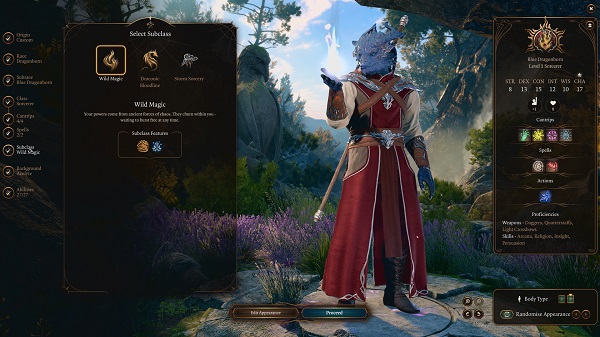 Character creation in Baldur’s Gate 3 sets the foundation for your entire adventure. The game offers a wealth of options, from races and classes to backgrounds and abilities, all rooted in D&D 5th Edition rules. Choosing wisely ensures your character aligns with your preferred playstyle, whether you lean toward brute force, cunning spellcasting, or diplomatic finesse.
Start by selecting a race that complements your class. For example, High Elves gain a bonus to Intelligence, making them ideal for Wizards, while Tieflings’ innate fire resistance suits frontline fighters. Next, prioritize ability scores based on your class’s primary needs—Strength for Fighters, Dexterity for Rogues, or Charisma for Bards. Don’t overlook backgrounds; they provide role-playing flavor and skill proficiencies that can unlock unique dialogue options.
Character creation in Baldur’s Gate 3 sets the foundation for your entire adventure. The game offers a wealth of options, from races and classes to backgrounds and abilities, all rooted in D&D 5th Edition rules. Choosing wisely ensures your character aligns with your preferred playstyle, whether you lean toward brute force, cunning spellcasting, or diplomatic finesse.
Start by selecting a race that complements your class. For example, High Elves gain a bonus to Intelligence, making them ideal for Wizards, while Tieflings’ innate fire resistance suits frontline fighters. Next, prioritize ability scores based on your class’s primary needs—Strength for Fighters, Dexterity for Rogues, or Charisma for Bards. Don’t overlook backgrounds; they provide role-playing flavor and skill proficiencies that can unlock unique dialogue options.
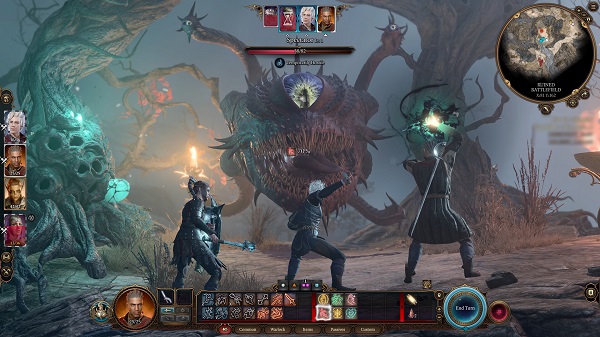 Your party in Baldur’s Gate 3 typically consists of four characters, including your custom protagonist and companions. A balanced party covers key roles: a tank to absorb damage, a healer for sustainability, a damage dealer for offense, and a utility character for crowd control or buffs.
Consider recruiting companions like Lae’zel (Fighter) for tanking, Shadowheart (Cleric) for healing, Gale (Wizard) for ranged damage, and Astarion (Rogue) for stealth and lockpicking. Synergize their abilities—pair a Rogue’s Sneak Attack with a Fighter’s ability to draw aggro, for instance.
Your party in Baldur’s Gate 3 typically consists of four characters, including your custom protagonist and companions. A balanced party covers key roles: a tank to absorb damage, a healer for sustainability, a damage dealer for offense, and a utility character for crowd control or buffs.
Consider recruiting companions like Lae’zel (Fighter) for tanking, Shadowheart (Cleric) for healing, Gale (Wizard) for ranged damage, and Astarion (Rogue) for stealth and lockpicking. Synergize their abilities—pair a Rogue’s Sneak Attack with a Fighter’s ability to draw aggro, for instance.
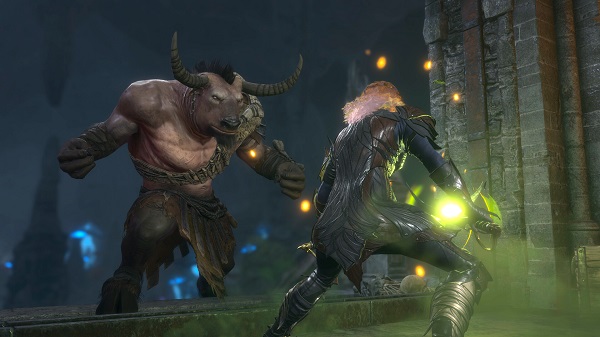 Spellcasting is a cornerstone of Baldur’s Gate 3, with Wizards, Clerics, and other casters wielding immense power. However, spell slots are limited, so strategic use is critical.
Focus on versatile spells like Magic Missile for reliable damage or Bless for party-wide buffs. Cantrips, which don’t consume slots, are great for consistent damage. Manage spell slots by using short rests and conserving high-level spells for tough fights.
Spellcasting is a cornerstone of Baldur’s Gate 3, with Wizards, Clerics, and other casters wielding immense power. However, spell slots are limited, so strategic use is critical.
Focus on versatile spells like Magic Missile for reliable damage or Bless for party-wide buffs. Cantrips, which don’t consume slots, are great for consistent damage. Manage spell slots by using short rests and conserving high-level spells for tough fights.
 Side quests in Baldur’s Gate 3 offer rich rewards, from powerful gear to unique story moments. Many are missable, so thorough exploration and NPC interaction are essential.
Talk to every NPC, as even minor characters can trigger quests. For example, helping the Tieflings in Act 1 unlocks allies later. Check journals and notes for clues to hidden areas, like the Arcane Tower in the Underdark. Completing side quests also boosts experience, making main story challenges easier.
Side quests in Baldur’s Gate 3 offer rich rewards, from powerful gear to unique story moments. Many are missable, so thorough exploration and NPC interaction are essential.
Talk to every NPC, as even minor characters can trigger quests. For example, helping the Tieflings in Act 1 unlocks allies later. Check journals and notes for clues to hidden areas, like the Arcane Tower in the Underdark. Completing side quests also boosts experience, making main story challenges easier.
1. Crafting Your Perfect Character
 Character creation in Baldur’s Gate 3 sets the foundation for your entire adventure. The game offers a wealth of options, from races and classes to backgrounds and abilities, all rooted in D&D 5th Edition rules. Choosing wisely ensures your character aligns with your preferred playstyle, whether you lean toward brute force, cunning spellcasting, or diplomatic finesse.
Start by selecting a race that complements your class. For example, High Elves gain a bonus to Intelligence, making them ideal for Wizards, while Tieflings’ innate fire resistance suits frontline fighters. Next, prioritize ability scores based on your class’s primary needs—Strength for Fighters, Dexterity for Rogues, or Charisma for Bards. Don’t overlook backgrounds; they provide role-playing flavor and skill proficiencies that can unlock unique dialogue options.
Character creation in Baldur’s Gate 3 sets the foundation for your entire adventure. The game offers a wealth of options, from races and classes to backgrounds and abilities, all rooted in D&D 5th Edition rules. Choosing wisely ensures your character aligns with your preferred playstyle, whether you lean toward brute force, cunning spellcasting, or diplomatic finesse.
Start by selecting a race that complements your class. For example, High Elves gain a bonus to Intelligence, making them ideal for Wizards, while Tieflings’ innate fire resistance suits frontline fighters. Next, prioritize ability scores based on your class’s primary needs—Strength for Fighters, Dexterity for Rogues, or Charisma for Bards. Don’t overlook backgrounds; they provide role-playing flavor and skill proficiencies that can unlock unique dialogue options.
Choosing Your Class Wisely
Each class offers distinct mechanics. For beginners, Fighters or Clerics are forgiving due to their durability and straightforward abilities. Advanced players might gravitate toward Wizards or Rogues for their versatility and skill-based challenges.Ability Score Allocation
Focus on your class’s core stats (e.g., Wisdom for Clerics) and consider a balanced spread for secondary skills like Constitution for health. Use point-buy or recommended presets to avoid spreading points too thinly.- Tip: Save often during character creation to experiment with builds.
- Tip: Review racial bonuses to maximize synergy with your class.
2. Understanding Combat Mechanics
Combat in Baldur’s Gate 3 is turn-based, rooted in D&D’s tactical depth. Mastering it requires understanding action economy, positioning, and environmental interactions. Each character gets a move, an action, a bonus action, and sometimes reactions per turn, so planning is key. Positioning can make or break a fight. High ground grants advantage on ranged attacks, while shoving enemies off ledges can end encounters quickly. Environmental hazards, like explosive barrels or grease pools, can be ignited or manipulated for devastating effects. Always check your surroundings before engaging.Action Economy Basics
Actions include attacking, casting spells, or using items, while bonus actions cover off-hand attacks or quick spells. Reactions, like Opportunity Attacks, trigger under specific conditions. Learn which abilities use what to maximize efficiency.Leveraging the Environment
Use height advantages, choke points, and interactive objects. For example, dipping weapons in fire adds bonus damage, and shoving enemies into hazards can save resources.- Tip: Keep an eye on enemy health bars to prioritize targets.
- Tip: Use short rests to recover health and abilities between fights.
3. Building a Balanced Party
 Your party in Baldur’s Gate 3 typically consists of four characters, including your custom protagonist and companions. A balanced party covers key roles: a tank to absorb damage, a healer for sustainability, a damage dealer for offense, and a utility character for crowd control or buffs.
Consider recruiting companions like Lae’zel (Fighter) for tanking, Shadowheart (Cleric) for healing, Gale (Wizard) for ranged damage, and Astarion (Rogue) for stealth and lockpicking. Synergize their abilities—pair a Rogue’s Sneak Attack with a Fighter’s ability to draw aggro, for instance.
Your party in Baldur’s Gate 3 typically consists of four characters, including your custom protagonist and companions. A balanced party covers key roles: a tank to absorb damage, a healer for sustainability, a damage dealer for offense, and a utility character for crowd control or buffs.
Consider recruiting companions like Lae’zel (Fighter) for tanking, Shadowheart (Cleric) for healing, Gale (Wizard) for ranged damage, and Astarion (Rogue) for stealth and lockpicking. Synergize their abilities—pair a Rogue’s Sneak Attack with a Fighter’s ability to draw aggro, for instance.
Companion Synergy
Each companion has unique skills and story arcs. Align their abilities with your playstyle, and invest in their personal quests to unlock powerful dialogue options and rewards.Party Composition Tips
Avoid overloading on one class type. A mix like Fighter, Cleric, Wizard, and Rogue covers most scenarios. Adjust based on your preferred combat style—melee-heavy or magic-focused.- Tip: Rotate companions to explore their stories and keep gameplay fresh.
- Tip: Use camp to swap party members for specific challenges.
4. Mastering Dialogue and Role-Playing
Baldur’s Gate 3’s narrative thrives on player choice, with dialogue shaping relationships, quests, and outcomes. Every conversation can lead to new opportunities or consequences, so approach them thoughtfully. Pay attention to your character’s background and class, as they unlock unique dialogue options. For example, a Noble background might sway aristocratic NPCs, while a Cleric can invoke divine authority. Use skill checks (Persuasion, Intimidation, etc.) strategically, but save before critical conversations, as failed checks can lock out quests.Navigating Skill Checks
Skill checks rely on dice rolls modified by your ability scores and proficiencies. Boost skills like Persuasion or Insight early for better dialogue outcomes.Building Relationships
Companions react to your choices. Consistent alignment with their values (e.g., Lae’zel’s martial focus) strengthens bonds, while conflicting choices may lead to conflict or departure.- Tip: Reload saves to test different dialogue outcomes.
- Tip: Keep high-Charisma characters in the lead for social encounters.
5. Exploring the World Effectively
The world of Baldur’s Gate 3 is dense with secrets, from hidden treasures to obscure quests. Exploration rewards curiosity, but it’s easy to miss key items or encounters without a systematic approach. Use the “Alt” key to highlight interactable objects, and check every corner of the map. Containers, books, and NPCs often hide clues or loot. Fast travel via waypoints saves time, but don’t rush—side quests like rescuing Halsin or exploring the Underdark yield powerful rewards.Finding Hidden Loot
Invest in Perception (Wisdom-based) to spot traps and hidden doors. Rogues with high Dexterity excel at disarming traps and picking locks.Managing Inventory
Inventory space is limited. Sell or store unneeded items at camp, and prioritize lightweight, high-value loot like gems or scrolls.- Tip: Send items to camp storage to free up space.
- Tip: Mark waypoints to revisit complex areas later.
6. Optimizing Spellcasting
 Spellcasting is a cornerstone of Baldur’s Gate 3, with Wizards, Clerics, and other casters wielding immense power. However, spell slots are limited, so strategic use is critical.
Focus on versatile spells like Magic Missile for reliable damage or Bless for party-wide buffs. Cantrips, which don’t consume slots, are great for consistent damage. Manage spell slots by using short rests and conserving high-level spells for tough fights.
Spellcasting is a cornerstone of Baldur’s Gate 3, with Wizards, Clerics, and other casters wielding immense power. However, spell slots are limited, so strategic use is critical.
Focus on versatile spells like Magic Missile for reliable damage or Bless for party-wide buffs. Cantrips, which don’t consume slots, are great for consistent damage. Manage spell slots by using short rests and conserving high-level spells for tough fights.
Spell Selection
Choose spells that fit your party’s needs. Crowd-control spells like Hold Person or area-of-effect spells like Fireball can turn the tide of battle.Managing Spell Slots
Track your slots and prioritize long-rest recovery in safe areas. Arcane Recovery (for Wizards) or similar class features can replenish slots mid-adventure.- Tip: Experiment with spell combinations, like Grease + Firebolt.
- Tip: Use scrolls to cast spells without expending slots.
7. Tackling Tough Encounters
Baldur’s Gate 3 features challenging battles, especially against bosses like the Goblin Leaders or Mind Flayers. Preparation and adaptability are key to victory. Scout enemies with stealth or spells like Arcane Eye to assess their strengths. Buff your party before combat with spells like Bless or Haste, and debuff enemies with abilities like Faerie Fire. Use consumables like potions or scrolls for an edge in dire situations.Pre-Combat Preparation
Position your party strategically before initiating combat. Place ranged characters on high ground and tanks near choke points.Adapting to Enemy Tactics
Enemies use the same mechanics as your party. Watch for their spellcasters or high-damage units, and prioritize neutralizing them.- Tip: Stock up on healing potions for emergencies.
- Tip: Use crowd control to isolate and eliminate key threats.
8. Managing Resources and Camp
Resources like gold, potions, and camp supplies are finite, so manage them wisely. Camp supplies are needed for long rests, which restore health and spell slots, while gold funds gear upgrades and vendor purchases. Prioritize buying key items like healing potions or ability-enhancing gear from vendors. Use camp to restock supplies, but don’t over-rely on long rests, as some quests have time-sensitive elements. Sell excess loot to merchants to maintain a steady gold flow.Efficient Camping
Stockpile camp supplies from crates and enemies. Aim for 40 supplies per long rest to avoid shortages.Vendor Interactions
Haggle with vendors for better prices, and check their stock after long rests, as it often refreshes.- Tip: Store excess supplies in camp chests.
- Tip: Compare vendor prices to maximize gold efficiency.
9. Uncovering Side Quests and Secrets
 Side quests in Baldur’s Gate 3 offer rich rewards, from powerful gear to unique story moments. Many are missable, so thorough exploration and NPC interaction are essential.
Talk to every NPC, as even minor characters can trigger quests. For example, helping the Tieflings in Act 1 unlocks allies later. Check journals and notes for clues to hidden areas, like the Arcane Tower in the Underdark. Completing side quests also boosts experience, making main story challenges easier.
Side quests in Baldur’s Gate 3 offer rich rewards, from powerful gear to unique story moments. Many are missable, so thorough exploration and NPC interaction are essential.
Talk to every NPC, as even minor characters can trigger quests. For example, helping the Tieflings in Act 1 unlocks allies later. Check journals and notes for clues to hidden areas, like the Arcane Tower in the Underdark. Completing side quests also boosts experience, making main story challenges easier.
Tracking Quests
Use the journal to monitor active quests and objectives. Some quests have multiple outcomes, so save before making big choices.Hidden Areas
Search for illusory walls or high-Perception checks to uncover secret rooms and loot caches.- Tip: Revisit areas after story progression for new quests.
- Tip: Use companions with high Investigation to find secrets.
10. Preparing for the Endgame
As you approach Act 3, Baldur’s Gate 3 ramps up in difficulty and narrative complexity. Preparing your party for the final challenges requires optimizing builds, gear, and story choices. Focus on acquiring legendary items, like the Helldusk Armor, and maxing out key abilities. Resolve companion quests to ensure their loyalty and unlock powerful abilities. Be ready for morally ambiguous choices that affect the ending—save frequently to explore outcomes.Gear Optimization
Seek out vendors and quests for endgame gear. Enchantments and resistances tailored to your party’s weaknesses are critical.Story Choices
Your decisions in Act 3 shape the game’s conclusion. Align choices with your character’s motivations, but consider long-term consequences for allies and factions.- Tip: Stock up on high-level spell scrolls for tough fights.
- Tip: Balance combat prep with narrative role-playing for a satisfying finale.




